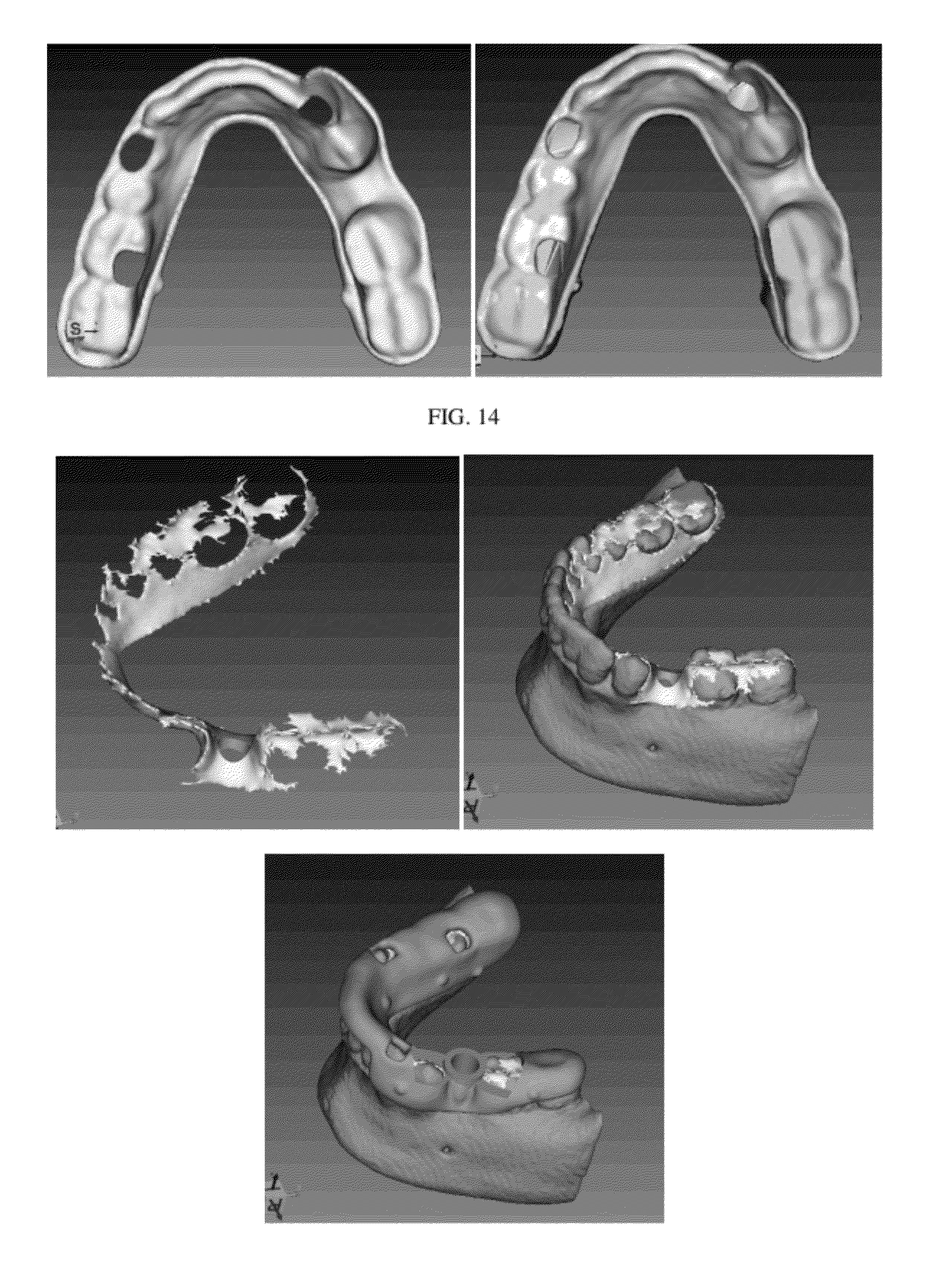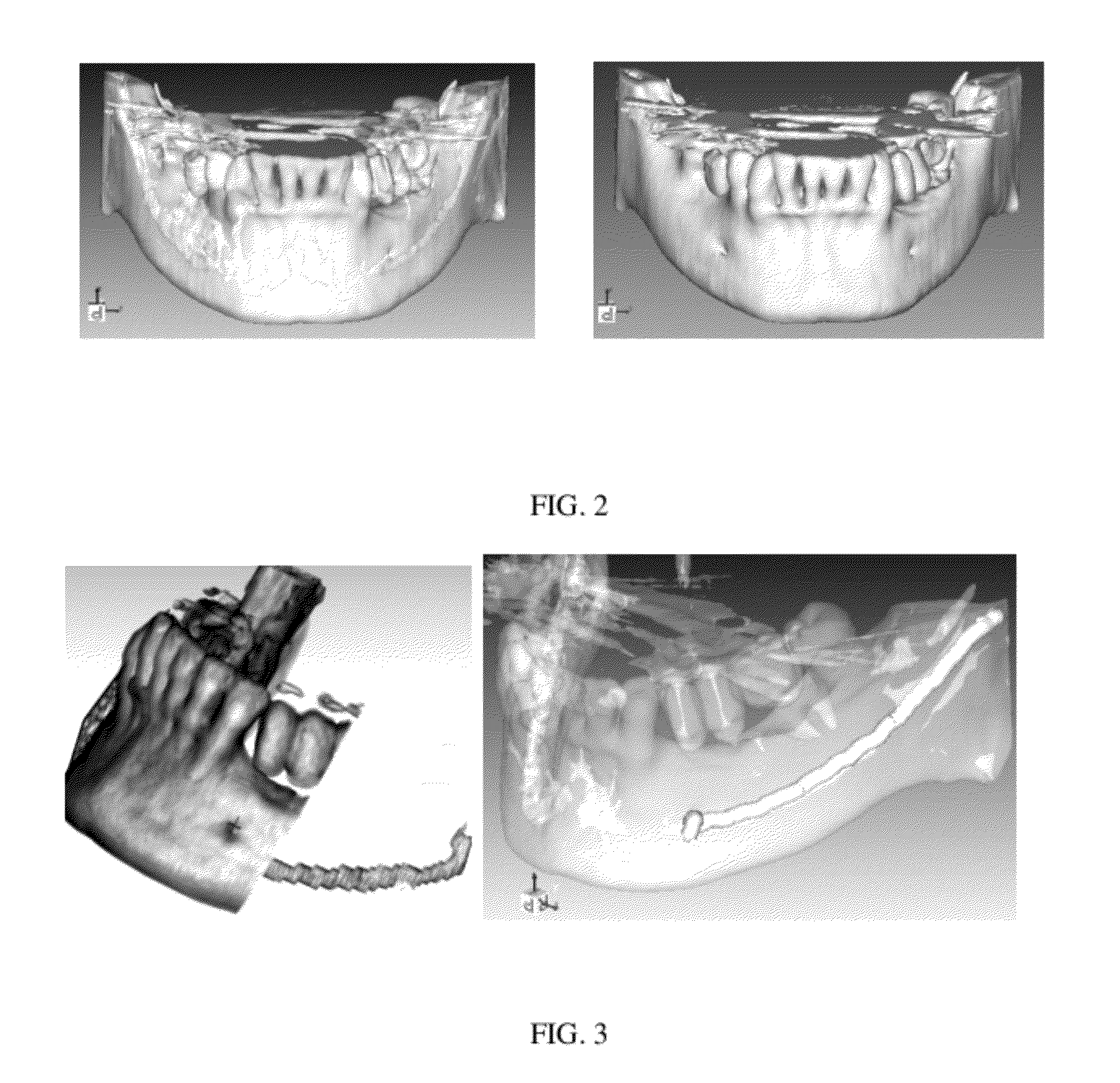Hybrid method for dental implant treatment planning
a dental implant and hybrid technology, applied in the field of dental implant treatment planning, can solve the problems of high cost of materials, and many treatment options such as tooth extraction or bone modification, and achieve the effect of rapid prototyping technology
- Summary
- Abstract
- Description
- Claims
- Application Information
AI Technical Summary
Benefits of technology
Problems solved by technology
Method used
Image
Examples
Embodiment Construction
Digital Treatment Planning
[0040]FIG. 1 is the overall workflow of this approach when a bone-level surgical guide is needed. The workflow includes four phases, namely, digital treatment planning, master model CAD / CAM, model-based planning, and surgical guide making.
[0041]In the first step, the CT scan data is loaded into the software system. The jaw model is then created by thresholding and surface reconstruction. Since CT data is grayscale based, thresholding will easily segment out the jaw bone. For the mandible, the jawbone will also show the tubular chamber where the nerves run through. FIG. 2 shows different views of a reconstructed jaw bone model. The picture in the left side shows the nerve channels with transparency. On the top of the model is the X-ray scatters. They need to be removed by the treatment planning software, but this is not a topic of this document. Next the surface reconstruction of the bone structure will create a triangulated surface model and export it as s ...
PUM
 Login to View More
Login to View More Abstract
Description
Claims
Application Information
 Login to View More
Login to View More - R&D
- Intellectual Property
- Life Sciences
- Materials
- Tech Scout
- Unparalleled Data Quality
- Higher Quality Content
- 60% Fewer Hallucinations
Browse by: Latest US Patents, China's latest patents, Technical Efficacy Thesaurus, Application Domain, Technology Topic, Popular Technical Reports.
© 2025 PatSnap. All rights reserved.Legal|Privacy policy|Modern Slavery Act Transparency Statement|Sitemap|About US| Contact US: help@patsnap.com



